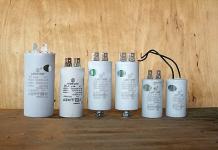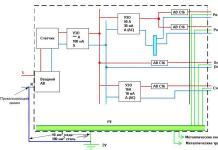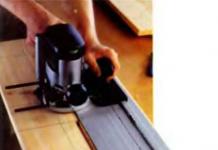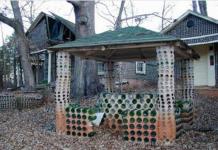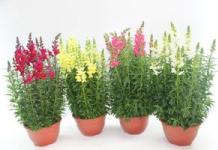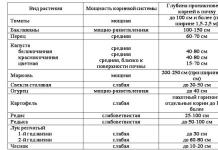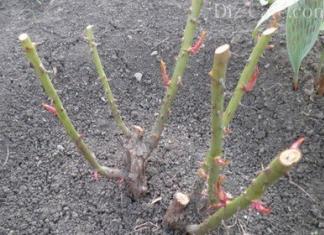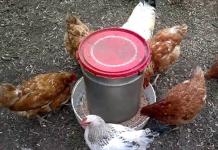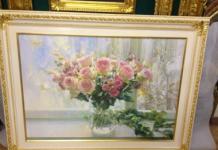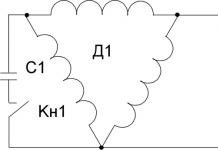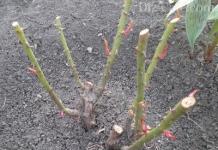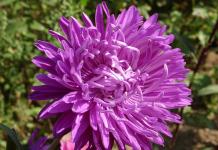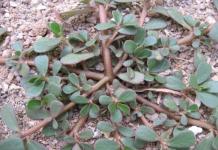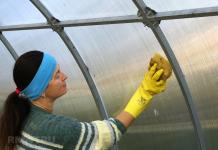Gold leaf plating is a technology for treating the surface of a gold leaf coating. Gilding with gold leaf has long been used to decorate various frames and baguettes. This type of decoration gives the elements an aristocratic luxury, allows you to highlight the element, or, on the contrary, fit it into the decoration of the room. Gold leaf is the finest material for decoration, which will make the decoration of your home unique. The thinness of the leaf is comparable to a light thread of a spider's web. A huge plus is the durability of the metal and the absence of a corrosive effect on gold, unlike other finishes. Modern technologies are improving every year the process of making gold leaf sheets, but even our ancestors made a living in this industry through manual labor.
Production
The softness of gold makes it easy to work with. In production, a block is cast and rolled out to the smallest thickness. The next step is to cut into small strips and then cut into small squares. Having put everything in a stack, the gold is processed with a hammer, about two thousand blows thinning the layer to 1-2 microns on each sheet. The resulting flattened squares are placed in a book or on a cloth. Thus, gold leaf coating has two types of delivery:
- A book from which a leaf can be removed by blowing;
- Transfer, applying a sheet to fabric paper, which is removed after gluing the gold coating.
What is this type of decoration?
Unlike inexpensive imitation, gold leaf coating involves applying precious metal to the surface. Gold leaf itself is the thinnest sheets with a thickness of up to a fraction of a micron, consisting of a metal alloy with a high content of precious metal. And the thicker the sheet, the more carats of gold it contains. Since the precious metal has the highest malleability and ductility, gilding is obtained without defects: cracks, jams or breaks. However, only a professional is able to perform gilding of leaf, since it is plasticity that can play a “wicked joke” on a beginner - if not handled carefully, he will tend to crease.
The technology itself has not changed since previous centuries, although the materials have “stepped” far forward in their quality and properties. And yet, as before, gilding with gold leaf includes:
- surface preparation. All gross defects - cracks, chips - are eliminated. The surface is leveled with a special putty and, where necessary, ground down with special tools;
- padding. For the primer, the required shade is used, which affects the final appearance. Most often they resort to warm and light tones, which emphasizes the beauty of the gilded surface;
- sanding. After the last layer of soil has completely dried, the surface is sanded with the finest sandpaper to remove even microscopic shagreen;
- varnishing The master must ensure a complete “mirror” surface, for which high-quality varnishes are used. The varnish is applied in several layers to eliminate the minimum chance of streak formation;
- polishing Specks of dust and other artifacts that can lead to defective gilding are removed from the dried varnish;
- direct gilding. Gold plating.
Restoration with gold leaf
Gilding can be used for restoration purposes. We are talking about those cases when it is necessary to restore the gilding on antique objects or to further refine items that were not plated with gold. In both cases, restoration with gold leaf gives the product, and with it the interior, a more interesting and expensive appearance. A big advantage of using gold in restoration is that it does not oxidize, does not tarnish, and does not lose its high qualities over many years.
The price for coating with gold leaf depends largely on the true weight of the precious metal. However, the complexity of the terrain, the total area covered and, of course, the initial quality of the surface are of great importance. Coating with gold leaf - the price is very high, but the quality and result will please anyone.
| Level of detail | Material | Price |
| Flat rods up to 4 cm wide. | your material | from 400r/l.m. |
| material + potal | from 500r/l.m. | |
| material + gold | from 1,100 rubles / p.m. | |
| Medium detail with elements larger than 4 cm. | no material | from 2,100r/sq.m. |
| material + potal | from 3,500 / sq.m. | |
| material + gold | from 18,100r/sq.m. | |
| Highly detailed with complex multi-component elements | no material | from 3,200r/sq.m. |
| material + potal | from 4,500r/sq.m. | |
| material + gold | from 22,200/ sq.m. |
Check price
Examples of gilding with gold leaf:

Gold leaf is the thinnest sheets of precious metal up to a fraction of a micron thick. This unusual material is used for gilding jewelry and other products, the production of which involves coating with tinsel. The sheets are made either of pure yellow metal or of its alloys with silver or copper. The physical properties of gold allow the minimum thickness of leaf plates to be achieved - pure metal is soft and malleable. The simplest example of objects covered with tinsel is the domes of churches, which for several centuries have traditionally been finished with sheets of the thinnest sheets of precious metal. How do modern craftsmen do gilding with gold leaf?
Production of tinsel
The softness and malleability of pure gold allows the metal to be rolled into very thin sheets. Thanks to these physical properties of the metal, the sheets are obtained without cracks and breaks, that is, they are not damaged during the manufacturing process. The process of producing gold sheets begins with the casting of a bar. An ingot with dimensions of 20x5x1 cm is cast from metal, and then carefully rolled into a strip. The length of such a strip can reach 30 meters.

How to continue working with gold leaf? The strip is cut into squares, which are folded together, separated by paper sheets. Before the tinsel can be used for gilding work, this book is sent under a hammer that works about two thousand blows. Under the blows of the instrument, the sheets of tinsel become even thinner and form a kind of “cake”. A square is cut out of the “cake” and placed in a book.
The most important stage in the production of tinsel is beating the gold with a hammer. This procedure is very labor-intensive and difficult to perform. The hammer must strike so that the blows occur not only in a certain sequence, but also with the same force. Compliance with these requirements is mandatory, as it ensures the same thickness of the gold sheets over their entire area.

One book contains up to three hundred leaf sheets, each of which becomes 10 times larger after the beating procedure. For the most complete picture of the tinsel production process, it is recommended to watch the video, which reflects each stage of the production of thin gold sheets. Working with gold leaf largely depends on the quality of the sheets. If the sheets are made in accordance with all the rules, then the gilding of the product will also meet all quality requirements.
Gilding tinsel
The technology of gilding with tinsel is based on one unusual property of gold: metal, rolled to a very small thickness, adheres to smooth surfaces at the molecular level. Coating a product with tinsel is a complex process, since working with the thinnest sheets of precious metal requires attention and accuracy. Casting a product from gold is much easier than covering the same product with tinsel.
This unusual property allows gold leaf to be used to decorate church domes, statues, fountain compositions, as well as pieces of furniture used to create a luxurious environment. The technology of applying material has changed throughout human history. Now tinsel is used as packaging for expensive sweets and even as an ingredient in coffee and cocktail drinks.

Among the methods of gilding with tinsel, experts distinguish two options: attaching the precious metal to polyment and to mordan. What is their difference? Polyment is a kind of base on which sheets of tinsel are attached. The composition of the polyment is based on clay, to which soap, white beeswax and whale oil are added in small quantities. The peculiarity of this method of gilding can be considered the final result: the surface takes on the appearance of real gold and looks as if it were made of metal. Attaching tinsel to polyment requires large financial and labor costs, so it is used in cases where it is necessary to treat a surface that is not exposed to the external environment. Most often, furniture is gilded this way.
What is a leaf coating on a mordan? This treatment of the product with gold allows you to give its surface a matte effect. To carry out the procedure, materials based on vegetable oils are used; Mordan varnish itself is prepared from flax and hemp oil with the addition of special components. In this case, treating the surface with tinsel is easier and faster. Mounting on the face allows you to decorate a variety of surfaces, including wood, plaster, and marble.

Before gilding the face, the surface of the product is primed with cinnabar and then wiped with cloth to remove irregularities. The prepared part is covered with mordan and dried for the required time. Depending on the variety of Mordan, drying can last from several hours to a whole day. Before applying the tinsel, the master checks the surface for “tack-free” conditions. It is very important here not to dry the mordan completely, since gold will not stick well to a dry surface. Undried mordan is also not suitable for gilding with gold leaf, since the sheets of material will sink in it. Considering the value of gold, all work should be carried out strictly according to technology and very carefully.
Simplified Technology
The process of applying gold leaf to a surface can be represented as the following algorithm. Three layers of acrylic primer are applied to the product, and the first layer should be more liquid than all the others. This is necessary in order to saturate the surface. The first and second layers are dried for an hour, after applying the third layer the product is left to dry for about 8 hours.
The dried surface is sanded using abrasive paper, P240 or P400 paper is suitable. Then we apply shellac varnish to the product with a brush, dry it and sand it again, but with P600 marking paper. After all the preparatory procedures, the part is treated with Mordan and dried to the required level of stickiness.
After the mordan has dried to the required level of stickiness, gold leaf can be applied. The material is applied and pressed with a brush to avoid shifting. After a day, the product can be additionally polished with cotton, which will not damage the gold-plated surface. If you have all the components, this procedure for applying gold plating can be carried out at home.
Modern technologies
The technology of gilding with gold leaf has undergone some changes throughout the history of using this material for surface finishing. The essence of the technology for producing tinsel sheets remains the same: a bar of precious metal is rolled into strips, cut into squares, the squares are put into a book and sent under the hammer. New developments make it possible to achieve sheets that are much thinner than those that were produced before. The task of the craftsmen is simplified by the use of computer technology.

Now gold leaf is practically not produced by hand; outdated technologies are a thing of the past. The process of obtaining thin leaf sheets today is completely automated, everything is done by machine. The electric hammer is configured for both the initial beating of sheets and the subsequent processing of precious metal to a minimum thickness. The casings of bovine intestines, which used to be used to wrap tinsel sheets, are also no longer used. Instead, modern plastic forms are used.
In Russia, the production of tinsel is carried out by a non-ferrous alloys plant located in Moscow. There are also private companies producing gold leaf, but their production volumes of material for mechanical gilding are not significant.
To understand what tinsel looks like, just imagine a very thin sheet of foil up to 1.5 microns thick. According to domestic standards, tinsel is produced in square sheets with a side of 91.5 mm. The sheets are laid out in books, the separator between the sheets is tissue paper. Books can consist of 10 or 60 leaf sheets.

In order to imagine how gold leaf should be applied, it is recommended to watch a video accompanied by explanations from the master. Experts distinguish two types of gold leaf: free and transfer. Depending on the type of tinsel, there are differences in working with the material. Free gold is taken out of the book and placed on the pillow, and transfer gold is initially glued to a sheet in the book.
Gilding- a very ancient technique of decorative finishing. It has been used since prehistoric times. Indeed, native gold is one of the first metals known to man. And then, in the Bronze and Iron Ages, nothing could compare with noble metal in color intensity, depth of tone, softness of shine. And the master who made the blade considered it his duty to decorate it with a gold pattern. Otherwise the work lacked the finishing touch.
Kievan Rus has been famous for its goldsmiths since time immemorial. However, they did end up in history. The chronicles mention that Grand Duke Vladimir ordered Perun's silver head to be decorated with a golden mustache. And this happened even before the baptism of Rus'!
In the 9th-10th centuries, gold began to be used on a larger scale; they were used to decorate details of architectural structures. So, in 1113, at the behest of Prince Svyatopolk, the grandson of Yaroslav the Wise, the domes of St. Michael's Cathedral were gilded in Kyiv, and from then on it became known as the Golden-Domed Cathedral. Another interesting monument has also been preserved, confirming the art of ancient masters - the copper doors of the cathedral in Suzdal with a gold pattern on a black lacquer background. In those days, heating during gilding was carried out on coals, and the metal was etched with cranberries. Nevertheless, the gold coating did not age for centuries, despite the fact that it was in the open air and touched by thousands of hands!

The gold trim of the old candlestick made it elegant and solemn. All that remains is to decorate it with red balloons and light the candles. The house is ready for Christmas evening.
Decorative gilding
Precious metals have always been used in the finishing and decoration of palace interiors, creating the impression of unimaginable wealth and luxury. But it is possible to make a small object sparkle without large financial costs.
Gilding is a creative process. Two wooden candlesticks show us how the transformation takes place. It’s easy to transform your original walls. The basis will be a smooth surface, for example, vinyl wallpaper. Apply the paint to the wall using a template, lightly touching it with a brush dipped in gold paint. Gold and silver colors will easily give a noble look to the most ordinary things: candlesticks, paintings, boxes.

Preparation for decorative gilding
Gilding is a very complex and lengthy process that requires patience, accuracy and experience. To gain this experience, you should start with simpler methods of decoration that imitate gold plating. Our goal is to give our products a beautiful, noble, sparkling look. And naturally, the gold surface should have an impeccable appearance. The slightest imperfections: traces of processing, scratches, roughness, even specks of dust - and the work is ruined! Therefore, the surface of a wooden object is sanded, cracks are sealed, and dust is carefully removed.

Using liquid gold paint, you can apply a geometric or floral pattern to the wall. Contrasting transitions between the red matte color of the wall and the gold pattern, sparkling metal, create the effect of truly royal wealth.
There are ready-made gold paints, which, when applied to a cleaned surface, give the product a golden appearance. The paint consists of a metal powder that reproduces the color of the metal (gold, bronze, copper, iron, etc.). However, paint can only approximately imitate real leaf coating.
|
1. Acrylic paint is applied to the prepared wooden candlestick as a primer. Red goes better with gold and cool blue with silver. Let the soil dry. |
2. Before application, the gold paint is thoroughly mixed with a wooden stick, as the pigments settle to the bottom of the container. A small amount of gold paint is poured into an old saucer and the candlestick is evenly tinted from bottom to top. The paint dries very quickly. |
3. To give the candlestick an antique look, after the paint has dried, the “golden” layer is lightly sanded with coarse wool until the red primer layer begins to show through in some places. |
Framed in gold - gilded leaf
Since ancient times, gilding has been carried out mainly in two ways: by gluing gold leaf onto an object or by fire gilding, based on the use of mercury. The second method of gilding is very dangerous. For example, when the domes of St. Isaac's Cathedral in St. Petersburg were being gilded (1838-1841), about 60 people were poisoned by mercury vapor. Nowadays this method of gilding is not used.
But gilding with gold leaf is widely used today. The word “susal” comes from the ancient word “susal” - face, that is, leaf - facing. Such gold is stored in special books in which 60 pieces of gold with a thickness of 0.13 to 0.67 microns are placed between sheets of paper. Sheet size - 80 x 80, 72 x 20 mm. Other sizes may be available.
Gold leaf can be free and transfer. Free gold is simply a very thin layer of metal. It cannot be touched with your hands; it deflates from breathing, so the gilder manipulates it (transfers, cuts, smoothes) using a special knife and a squirrel brush. In general, considerable skill is required. In transfer gold, each sheet of gold is placed on white silk paper, together with which it is transferred to the surface to be coated. Once the gold is stuck in place, the silk paper can be removed. Transfer gold is much easier to work with.
|
1. The prepared surface of the frame is painted with acrylic paint. After drying, the surface is thoroughly sanded, dust is removed and a second layer of primer is applied. It is sanded again. If necessary, the operation is repeated again. |
2. Then the dry and dust-free base is painted with oil varnish using a brush. Gold leaf or its substitute is glued onto the varnish. After about three hours, the varnish dries, acquiring ideal adhesive ability. If you run your finger over it, you can hear a slight whistling sound. |
|
3. The time has come for the most important operation - we begin to cover the surface with gold. We place a sheet of transfer gold on the prepared frame and press it lightly (paper side on top). |
4. The paper is removed and the gold leaf is gently pressed with cotton wool. It is advisable not to rub, but to tap lightly so as not to damage the thinnest layer of gold. Master gilders use squirrel, core and rubber brushes to transfer and smooth gold. |
|
The frame is gilded using gilding leaf method |
|
There are two types of gilding with gold leaf: oil (matte) and glue (glossy).
Oil gilding can be used on almost any surface - wood, metal, plaster, plastic. This is a fairly simple, convenient and common method of gilding. This method is called oil-based because the gold leaf is glued onto oil varnish - mordan. The composition of the varnish can be different, it all depends on the conditions in which the gold-plated object will be located.
Adhesive gilding Use only for interior work. This method is used to gild mainly wood, sometimes plastics (polyurethane). The technique of water gilding has remained virtually unchanged since ancient times.
Gold leaf and various types of gold paint can be purchased at art supply stores. We offer transfer gold in different sizes and shades: white gold, yellow gold, 24-karat pure gold. It must be remembered: the purer the gold (the more carats it contains), the less sensitive the gilding will be to the influence of weather and climatic conditions. A material that anyone can purchase to try their hand at gold plating is transfer gold foil.

All that glitters is not gold
A gold-plated product is an expensive thing, not accessible to everyone. The price is mainly high due to the high cost of gold. Therefore, a cheaper replacement was found for gold leaf. One of the famous A substitute for gold leaf is potal. Potal does not contain precious metals and is the thinnest sheets of a metal alloy - copper with zinc or copper with aluminum. Potal is much cheaper than gold leaf. And it is great for expressing individuality and even momentary mood. The technique of decorating with potal is similar to decorating with gold leaf.
Film gilding
With some stretch, gold self-adhesive film for laser printers, from which stickers and labels on CDs are made, can also be classified as gold leaf. This material is quite accessible to home craftsmen, and it is easy to work with it. The film is unwound from the roll and gradually sticks to the surface. Film gilding is used only on flat surfaces. So they gild, for example, simple ones. All imitation gold, as well as gold leaf with impurities, are usually coated with a protective layer of varnish.
|
1. To turn a wooden box into a gold one, we will use potal. First you need to apply glue to the base. In this case, acrylic is suitable (it dries quickly). |
2. The leaf of gold leaf is glued in its entirety. Since it is thicker than gold leaf, it can be separated by hand and placed on dried glue. The sheets should lie without wrinkles, one on top of the other with a slight overlap. |
|
3. Using a kolinsky brush, the gold leaf is smoothed out and glued to the base with light tapping. Especially carefully you need to press the edges and corners. The excess is picked up on a piece of paper for later use. |
4. Since the gold leaf is made of metals such as copper, zinc and aluminum, it oxidizes and darkens when exposed to moisture. Therefore, a protective layer of transparent varnish must be applied on top. Use shellac or zaponlac. Bituminous varnish gives gilded things an antique look. After drying, the varnish is polished everywhere, except in hard-to-reach places where a noble patina remains. |
Metal in the interior today is especially relevant. Even small accessories like boxes, cornices, candlesticks, if given a shiny look, completely change the impression of the apartment. The easiest way to transform them is with metallic glitter or metallic paint in an aerosol can. Working with these materials is interesting, easy and pleasant.

As if by magic, you can literally prepare for Christmas in half an hour. Household items like nuts, pebbles, and shaped pumpkins actually have a wider range of uses than is commonly believed. Especially if the surface, sparkling with gold and silver, is illuminated with candles.

Apply a layer of glue to the box with a brush and, while it is still wet, sprinkle with small glitter. Spread the glitter with your hands, making sure that the surface is covered evenly. A wonderful decoration for a dressing table.
Aerosol paints that imitate metal are now widely available. They can be applied to any surface: paper, wood, metal, plastic, glass, even to the wall. You can buy aerosol “gold” at car dealerships. With its help, you can not only create golden wheel caps for your car, but also elevate nondescript interior items. A table lamp, old picture frames, cornices blackened by time - there are a lot of places to use them! To obtain a brilliant result, it is important that the surface is dry and thoroughly cleaned of dust and rust. The treatment must be carried out twice. Both layers will dry within an hour. Unfortunately, it is technically impossible to maintain shine for a long time. But don’t be upset: when the shine fades, just apply a new layer of gold-plated aerosol.
On the eve of the New Year's carnival, we'll give one more idea to parents: your daughter will probably love that her quite ordinary shoes have suddenly turned into golden ballroom slippers. Just don’t forget to degrease them before painting!

Another idea for the holiday
Using glue, draw an outline on a sheet of gift paper and leave it to dry until the glue becomes transparent. Then we put gold or silver transfer foil on top and gently rub it in. After this, carefully remove the base paper. This design can even be made on textiles - a T-shirt or baseball cap. A great gift for the New Year - both unique and practical!
In art stores you can find gold paint in paste form. Pastes are usually made with beeswax and metallic pigments. The paste is ideal for restoring an old frame or an old wooden candlestick. It is applied with your finger and thoroughly rubbed into the surface. To achieve an antique effect, the gold trim of the frame can be slightly “aged” by rubbing a little natural umber into the figured profile.

Technology of gilding with gold leaf using oil-based products (on Mordan, on Mixtien)
The surface gilded in this way has the appearance of polished metallic gold. The main advantage of oil gilding is its exceptional resistance to moisture, due to which this method is actively used for external gilding work, for example, for gilding domes
Which mordan (mixtien) to choose?
There are 3 types of oil-based gilding products:
- LEFRANCE gilding agent 12 hours
- LEFRANCE gilding agent 3 hours
- gilding agent ROLCO (USA) 1-1.5 hours
The indicated time is the time that should pass between applying the product and applying the gold. This time may vary depending on climatic conditions. For example, in dry climates, you can apply gold 1 or 2 hours earlier than the time indicated on the product.
The gold leaf application can also be done one hour later than the time indicated on the gold plating product.
Gold plating agent LEFRANCE 12 hours Suitable mainly for large surfaces, for external work, in dry climates and in places where the dust concentration is not very high.
The result obtained with a 12 hour gold plating product will be better than the result obtained with a 3 hour gilding product (brilliance and depth). The durability of the 12 hour gold plating product will also be higher.
Gold plating products ROLCO 1-1.5 hours and LEFRANC 3 hours used mainly for smaller surfaces, for interior work and when circumstances do not allow the use of a 12 hour gilding product (humid climate and significant dust concentrations).
Never polish agate gold leaf that has been applied with a gold plating agent. The varnish coating remains elastic, and the stone can tear the gold leaf.
Materials and tools:
- Gold leaf in sheets or potal
- Gilder's knife
- Gilder's pillow
- Lampenzel (Paw) - flat squirrel hand
- Mordan brush
- Cotton swab for polishing and smoothing gold
- gesso
- Shellac
- Dye
- Topcoat (if necessary)
Gilding technique:
Before applying gold, the surface must be well prepared. Good preparation is the key to excellent and high-quality gilding.
PREPARATION:
Absorbent surfaces(wood, plaster, papier-mâché):
1. Gesso. For absorbent surfaces, it is recommended to use gesso when preparing the surface.
It is good to use automotive primers when gilding with gold leaf (imitation gold leaf) because... Gold plating is not very expensive work and using labor-intensive preparatory work is most often not profitable due to the length of time it takes.
2. Paint. A layer of paint, for example acrylic, is applied to the carefully prepared gesso. After drying, the paint is sanded.
3. Shellac. Several layers of an alcohol solution of shellac (“varnish”) are applied to the paint, approximately in the ratio of ten parts alcohol to three parts shellac. The alcohol must be at least 96%, otherwise the solution will be cloudy and, when applied to the surface, will strongly matte the surface. Each layer is also sanded with micron sandpaper.
4. Mordan. After the last layer of polish has dried, the surface is covered with Mordan.
When the varnish has dried normally, the gold leaf fragment sticks firmly and tightly, has a good shine and does not come off when rubbed hard with a swab. If the “greasy” glue is not sufficiently dry, the gold is washed away - it “sinks”, or its surface becomes matte, but not uniformly matte, but in spots. If gold “buys”, i.e. "floats" you need to wait with the gold overlay, because... the glue has not yet reached working tack. If the glue dries out, then the gold does not stick and comes off. In this case, gilding should be stopped and after the mordan has completely dried, the gilded surface should be covered with glue again.
Non-absorbent surfaces (metal): Liquid can be applied immediately.
APPLYING GOLD:
- Carefully transfer the sheet of gold from the book onto a special pillow; to do this, carefully turn the open book over onto the pillow and wait until the sheet of gold “falls” onto the pillow under its own weight. IMPORTANT: Do not take gold with your hands under any circumstances, it will immediately tear. Gold plating work must be carried out indoors without drafts; the slightest breeze will cause the gold to fly away.
- Prepare the paw (lampemsel): rub a small drop of cream on the back of your hand (you can use Vaseline), then walk the entire plane of the paw over the area smeared with oil, as if wiping off the oil, while making sure that there is not too much cream.
- Carefully place the foot on the gold sheet, the gold should stick to the foot.
- Take a foot with a sheet of gold and calmly lower it onto the gold-plated surface; when the gold transfers to the adhesive surface, remove the foot and rub in the gold with a cotton swab. IMPORTANT: The cotton swab should not go onto the glued surface, otherwise pieces of cotton wool may remain on the adhesive surface and it will be impossible to remove them without breaking the adhesive layer. Gold is applied to the adhesive surface with an overlap of approximately 1-2 mm. You need to grind the gold in the opposite direction of applying the gold sheets. After you have gilded the entire surface, the resulting cracks, breaks, and ungilded areas “flick,” i.e. They are gilded again, for which purpose the designated areas are coated with a well-wrung out (semi-dry) cotton swab moistened with sponge, and when a tack appears, they are gilded.
- After drying, the gilded surface is treated with a topcoat varnish (potplate is a must, gold only if the gilding will often be touched with hands (for example, on furniture, frames, etc.) in other cases - not recommended, because the shine will fade) . As a topcoating varnish, you can use "Polish" or a regular topcoat varnish.
As architecture and art developed, craftsmen used gold as a special type of decoration. The effect of decoration was achieved by applying the thinnest layer of precious metal - gold leaf - to the surfaces of objects made of wood, metal, plaster, stone, leather.
Story
Over time, gilding methods improved, and the method of decorating with gold leaf itself was used more and more widely, reaching its heyday in the 18th century.
One of the earliest written evidence of the use of gold leaf comes from the 8th century Lucca Manuscript. This collection of recipes describes in detail the recipe for preparing polyment - a base for gilding. This material was prepared from “thin” gypsum and Armenian bolus with the addition of a small amount of honey for parchment and the application of gold leaves on it. Armenian bolus - a natural earthen pigment with a significant admixture of clay and limestone - has been widely known since the Middle Ages, when it began to be used to prepare polyment.
Similar teachings can be found in many treatises and manuscripts. The most detailed set of rules contains the treatise of Cennino Cennini. The Renaissance painting technician devotes several chapters to the process of gilding with gold leaf on a rigid base—a gilding ground composed of an Armenian bolus washed with beaten egg white diluted with water. This composition was applied with a brush to the gypsum primer up to three or four times with short breaks. The master also talks about gilding itself, recommending covering the smoothed, or better yet, tooth-polished bolus preparation with egg white beaten with water, and then placing leaves of gold leaf on it.
Gilding was an integral part of Slavic icon painting throughout its centuries-old existence. Starting from the first icons, craftsmen used all the basic gilding techniques. “If you are going to gild or silver,” says one of the later copies of the iconographic original, “put plastic on the board, i.e. leaves of gold or silver, and add liquid glue. And I’ll go through the whole board. And dry it. And after drying, smooth it over with a bone and some kind of tooth. Mix the same with egg white and water and apply with a brush” [Code, hand. 112(2)].
Gilding technique
Over time, gilding techniques improved. Taking into account all the canons of gilding work, the gilding technique is divided into two main methods: gilding for polyment and gilding for mordan.
Gilding on polyment
Apparently, gilding on polyment was the most common method of gilding, since its recipes, starting from the 17th century, have reached our time in large quantities. This method of gilding surfaces is extremely labor-intensive at all stages of gilding work. It is used only by highly qualified craftsmen. Polyment gilding is used for finishing and restoration of furniture, paintings, other interior items, as well as complex moldings. This method is widespread in icon painting.
Polyment or, as it is also called, adhesive gilding is carried out on wood, plaster, mastic, papier-mâché. The gilding process consists of the following stages. The surface for gilding is prepared as much as possible: unevenness and any defects are removed, and dust is also removed. Then, using special brushes, the surface is treated several times with wood glue. Only if the gluing is done well will the gesso stick firmly to it. Gessolining is the next operation, which is carried out with brushes of different formats on a glued object. The gesso is applied first “straight” - with quick vertical blows, and then “smoothly” - with even movements. The gesso treatment operation is repeated several times, drying each layer. Next, the object is polished with pumice and horsetail, and then, in several operations, it is covered with polyment using a soft squirrel brush.
The gilding process is carried out in this way: gold sheets from the book are transferred to a gold knife, and then to a gold pillow, where they are cut into the required parts. Then the surface is treated with vodka using a squirrel brush, and then gold is laid out using a paw. The gilding process is completed by polishing, which is done with an agate tooth.
Gilding on polyment gives the greatest artistic effect: the gilded surface has the shine of real cast gold with a glossy effect.
Gilding on the face
Mordan gilding or oil gilding is so called because in the process of all preparatory operations materials based on vegetable oils are used, and the gold layer itself is applied to a special mordan varnish, also made on an oil basis. This method of gilding is simpler and more accessible than gilding on polyment. In addition, face gilding has a significant advantage: the surface gilded by this method is more resistant to moisture and other atmospheric phenomena. Oil gilding is carried out on metal, wood, plaster, mastic, and stone.
Gilding on a face also consists of a preparatory stage and the actual application of the gold layer. The cleaned surface is primed with red lead paint - a material prepared on natural drying oil. Thanks to this coating, the surface acquires good anti-corrosion protection. Then they begin to putty in several operations, allowing each layer to dry. After this, the surface is sanded. A well-polished object is coated with oil varnish. Some craftsmen apply a thin layer of oil or alcohol varnish on a primed and sanded surface and, after this varnish pad has completely dried, apply Mordan varnish. Then they begin to gild the surface. There are two ways to apply gold: 1) for large surfaces, gold is applied directly “from a book” and 2) first it is “blown” onto a special pillow, and then cut into separate parts with a gold knife. Then, using a squirrel tail paw, it is transferred to the surface intended for gilding. The second method is used when gilding small parts and surfaces with complex relief.
Today, gilding on the face is the most used method. Used in both interior and exterior work. Gilding using the muzzle method gives the surface a velvety and matte effect.
Types of gilding
Combined
This is a special type of gilding, when the gold is given a delicate matte shade. All preparatory work is the same with gilding on polyment. Surfaces with a polished shiny texture are obtained as a result of gilding on polyment, followed by chiselling. Matte areas are obtained as a result of gilding “touch-free” or on gelatin without coating with polymer and without polishing. Surfaces for matte gilding after gesso are not polymented, but covered with a layer of gelatin adhesive solution, and after the adhesive film has dried, they are gilded with vodka in the same way as polymented areas. A combination of polyment gilding with mordan gilding is possible.
Gilding with created gold
Created gold gilding is often found on small antique objects, especially paintings. This method is necessary for the restoration of miniatures of crushed drawings, and is widely used in icon painting. Master gilders perform gilding with melted gold on polyment, but the operations are somewhat different from ordinary glue gilding. Before polymenting, prepare a solution using gelatin glue. And bronze powder in the color of gold is applied to the polyment-coated surface and allowed to dry. Then, using a squirrel brush, cover the surface with a mixture of gum arabic and gold powder. Objects treated in this way acquire a soft, delicate surface that glows with gold.
Water-synthetic gilding
Water gilding is sometimes replaced by unified polyment, but in terms of the method and effect produced, this method is more reminiscent of oil gilding. Unipoly makes it possible to transfer water gilding to architecture. It retains the properties of oil gilding, but at the same time has the shine of water gilding. For example, the Kolner Instacoll System was specially developed as an alternative to oil technology for exterior coatings to achieve maximum gloss. Using the materials of this system, you can quickly obtain the required “tack”, and also, if necessary, restore it using a special activator. After using synthetic materials, the surface acquires an excellent glossy finish, without requiring additional polishing with teeth.
Bronzing
Bronzing a part means covering the surface with a special metal powder - bronze powder. This solution is often carried out using the face method, as well as with the help of other varnishes. When the required “tack” appears during the work, bronze powder is applied with a soft brush, which adheres well to the sticky surface.
Bronzing gives the surface the appearance of real gold. This coating is anti-corrosion and very durable.
"Garlic" gilding
One of the ancient Russian methods of gilding is called “garlic”. Juice is obtained mechanically from cloves of fresh garlic. For the convenience of applying gold to it, the juice can be diluted with distilled water. The juice is applied with a soft brush to the prepared surface in an even layer; when it dries, it is polished. The dried and polished layer is moistened with breath until it becomes tack-free. Then the gold leaf is transferred to the surface and pressed with a swab. With this gilding, the surface acquires an unusual shine.
Gilding “through fire”
The method of gilding “through fire”, or mercury gilding, is that the surface is covered with an amalgam of gold and mercury. This method was used for external gilding work - gilding of domes, fountains, bridges and balcony grilles.
The cleaned surface is covered with amalgam, after which the part is passed through a fire to evaporate the mercury. The surface is then cooled and polished with agate teeth. This method allows the gold to firmly bond to the metal being plated. Typically, this gilding lasts for more than 100 years.
The gloss of the surface, its durability, as well as the gilding procedure itself and the set of materials depend on the chosen technique for applying gold leaf. However, any method of gilding requires great skill in performing each operation. Skillful details are born after the meticulous work of a master gilder and can last for decades.


















